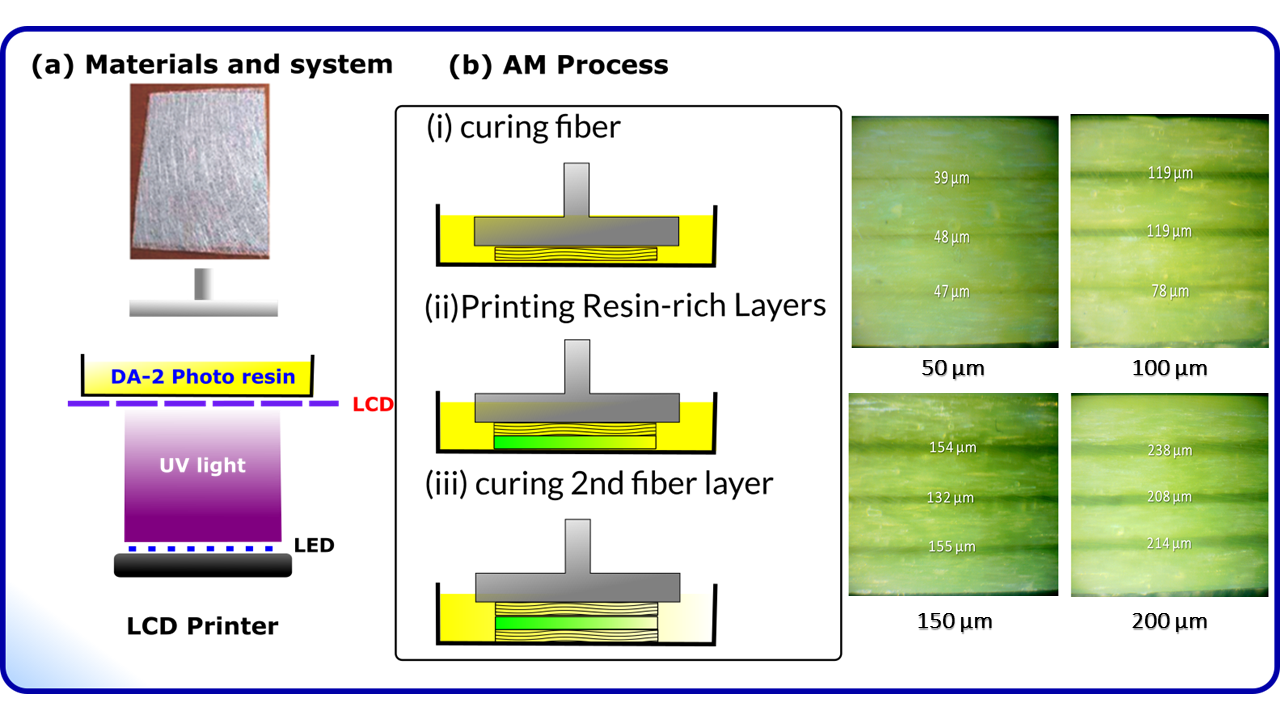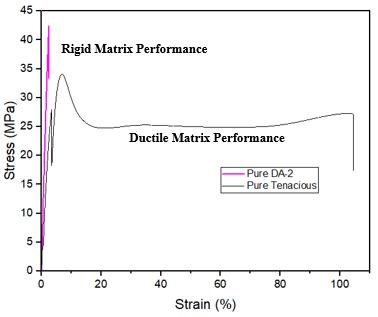Additive Manufacturing of Composite Materials

Two types of composites are featured in this project, fiber reinforced composites (FRCs) and spatially resolved multi-resin composites. The first type is composed of high strength and modulus fiber embedded in a polymeric matrix, producing a combination of properties non-obtainable by either component individually, where fibers act as load carriers and the matrix keeps them oriented during loading. Key advantages of FRCs is low cost, good in-plane properties and high property to weight ratio when compared to metals. However, they suffer from poor out-of-plane properties and are prone to delamination, due to mismatch in properties of fiber and matrix. After several experimental endeavors reported to enhance delamination resistance, it was found that interleaving –insertion of a discrete polymeric film between the fiber layers – is the most promising technique since it increases the composite’s interlaminar toughness without significantly increasing the composite’s weight or compromising its overall strength/stiffness. However, suffers from low flexibility is also very hard to manage. Additive manufacturing (AM) of FRCs is currently a very active area of research. AM offers several advantages compared to traditional lay-up techniques such as increased design flexibility, lower cost, as well as reduced tooling and material waste. In this project, an AM technique, known as digital light processing (DLP) to produce interleaved FRCs. This method offers many advantages over traditional manufacturing, such as simple set up, selective spatial reinforcement of a part, control over location, number, and thickness of the interleaves, and the use of multiple resins in a single part. The objective is to produce interleaved composites using chopped strand glass fibre (CSGF) with a good combination of strength and interlaminar toughness. Results are compared to composites made using traditional vacuum assisted resin transfer molding (VARTM) composites without interleaves, and are discussed in terms of the composite’s fibre volume fraction (FVF).

The second type of composites is a combination of resins put together in discrete block form in a pre-determined structure and proportions. Several industries nowadays (e.g. pharmaceutical, sports, fashion) benefit from multi-material 3D printing, as it allows for producing parts with a combination of properties (thermal, optical, mechanical). However, the 3D printing techniques reported suffer from multiple drawbacks (e.g. nozzle clogs and long printing time). In our work, we used a commercially available DLP printer, introduced multiple vats as part of the printing protocol and easily produced a dual resin system—one with high strength and another with high toughness—in a wide variety of structures in a single part. Such approach is advantageous as it has a very simple set up, overcomes the time constraint to produce a sample, and allows for using any type of resin combinations regardless of their individual chemical composition.

The results obtained from all structures are compared in order to decide which one produces the optimal combination of strength and toughness, and a detailed study is conducted to determine the dominating parameters to which the resultant properties and mechanical behavior can be attributed.

